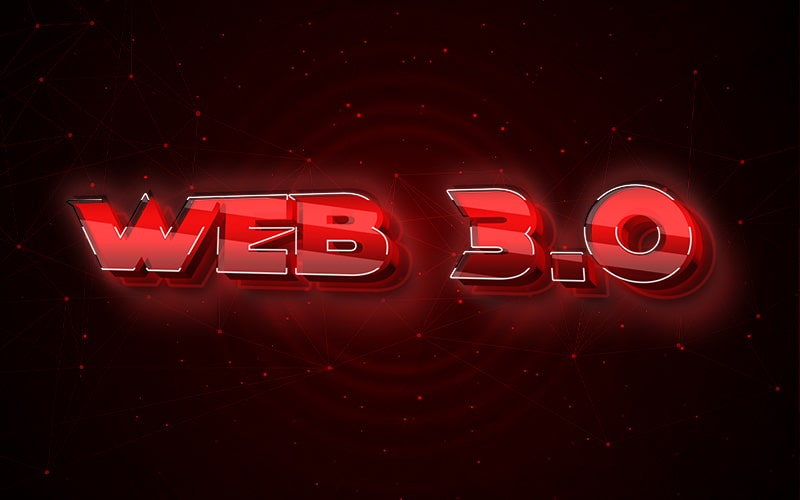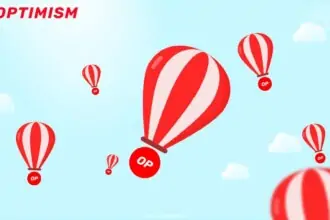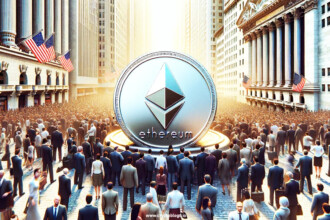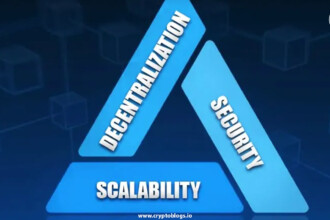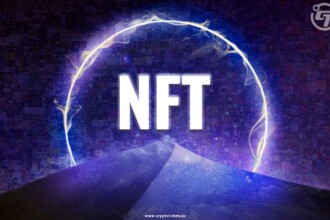The internet’s increasing advancement into human lives in less than a half-century is a once-in-a-lifetime occurrence in human history. Since its inception in 1983, the internet has evolved significantly. We are witnessing the significant transition of Web 2.0 into Web 3.0, that has the power to create a completely new reality for us to dwell in.
“We are seeing the beginning of things. Web 2.0 is broadband. Web 3.0 is 10 gigabits a second.”
– Reed Hastings
However, the process of internet evolution is directly inspired by human expectations from the present technologies. The current course of the internet towards Web 3.0 is also mirrored from the booming blockchain technology.
Internet Evolution To Web 3.0
Before diving straight into Web 3.0, we have to understand the evolution of the internet through every walk of human life. The internet was first introduced to the public in 1980, with limited features known as Web 1.0. Generally, Web 1.0 was mostly associated with read-only static networks called Content Distribution Network (CDN).
Web 1.0, on the other hand, contains some limitations that prevent users from engaging in the network. It was similar to a daily newspaper, with the exception that you could read the information written on the paper.
To attract huge participation, it was essential to overcome limitations present in Web 1.0 which Web 2.0 accomplished very well. Web 2.0 has delivered a read and write capability to users that paved the way for many platforms such as e-commerce, social media, blogging, streaming, and others to entice more human traffic on their platforms.
Web 2.0 development is incredibly a boon for the world and plays an immersive role in digitalization. Over two decades, it has changed the way of social interaction from limited access to universal access.
When smartphone technology gained over in 2007, the use of the internet surged. It has flooded web technologies with advanced functionality like create, share, and connect.
After two decades of Web 2.0 domination, the requirement for data privacy emerged with the growing number of different web applications and platforms. Also, users were demanding the control of their own data to prevent data breaching from the third party.
As a result, the need for a more transparent network developed, capable of putting full control of data in the hands of customers. This is when the Web 3.0 notion first appeared on the scene.
What is Web 3.0?
Web 3.0 is the third generation of the internet that enables users to read, write and execute capability. The third generation internet is also referred to as the Decentralized Web. This comprises different cutting-edge and revolutionary technologies such as decentralized ledger technology (DLT), machine learning (ML), Artificial Intelligence (AI), Internet of things(IoT), and Big Data.
Web 3.0 is expected to have more user-friendly and interactive features while keeping users’ data privacy at the center. It becomes essential for the platforms to develop projects on the transparent network such as blockchain, hashgraph etc. Apart from this, blockchain networks will also provide rapid data connectivity in any corner of the world.
How will Blockchain play a crucial role in Web 3.0?
It would be true to say that decentralization is the core concept in the inception of Web 3.0. So the current ledger technology is sufficiently developed to fulfill the requirements of transparency and data security on the network.
The key advantages of the blockchain come from its decentralization, immutability, security, and transparency. This is what the new Web 3.0 wants to serve its consumers.
The blockchain rose to prominence with the launch of the first cryptocurrency, Bitcoin. But do you know what perks blockchain provides to Web 3.0 players? Let’s find out.
- Decentralization overcomes flaws of centralization
Blockchain’s peer-to-peer network provides consumers with transparency in areas where centralization is lacking. In simple words, anyone on the blockchain can check and validate data from the block. It will create a trustless environment while validating data on its own without the intervention of a third party.
- Enhances Data Reconciliation
Blockchain could work as a real-time database for all the companies surfing on it. So, in spite of keeping expired data stored in the particular company’s server, they can directly access real-time and updated data from the blockchain. It will help to develop a more reliable data management system.
- DeFi Apps and Protocols
Decentralized Finance (DeFi) apps for lending, borrowing, or exchange such as Aave, Compound, Uniswap, and others are getting more and more users every day because of their easy-to-use finance system. Other than this, every transaction on the blockchain is recorded inside the block.
Also, DeFi platforms will help users to dodge centralized authorities such as governments, central banks, financial institutions, and others. It will assist them in paying additional taxes and eliminate the requirement for any authority’s consent.
- Improves Interoperability
Many blockchains are working on the cross bridge connectivity that links them with the other networks. With the high network connectivity, it will improve the interoperability between the different systems and networks.
- Automation Through Smart Contracts
Through smart contracts, users can lock pre-determine terms and conditions to automate the execution of an agreement. By doing so, all participants can be immediately certain of the outcome, without any intermediary’s involvement or time loss.
- Censorship-resistant storage of P2P data files
Governments or any authority can not impose censorship over individuals or groups as it’s impossible to intervene or modify the blockchain data. This could help consumers to hold their basic rights such as freedom of expression.
Blockchain Enhances Data Security For Web 3.0 Users
As blockchain enables cryptographic data encryptions, it provides the best security measures for the confidentiality of the block’s data. However, the two main data protective features that play a crucial role to secure the entire network are:
- Encryptions
Every data process on the blockchain is stored in a cryptographic manner. Owing to this encryption method, it is impossible for anyone to alter the data. Also, users can check and verify signatures on all nodes linked to the blockchain network. Even if someone makes modifications, then the network will automatically identify and mark it as invalid.
Furthermore, smart contract capability ensures secure automation with high accuracy through predetermined values loaded inside it.
- Secure Data Storage helps to prevent Cyber Attacks
Every data uploaded on the blockchain is stored in the distributed public network with the highest security features. Once data is stored on the network, it is impossible to reverse down or change.
Furthermore, every data flow on the blockchain network validates across the different nodes by validators. So, if the perpetrator wants to launch the attack and decrypt the network, then it will require the control of most of the nodes. This is impractical for the hacker to fall into the endless loop of computation.
All in all, blockchain integration in the web 3.0 space will eliminate cyber attacks on the users’ data. So, it can mitigate the risk of data from privacy invasion, data breaches, and other privacy issues.
Integration of Blockchain Technology in Web 3.0
In the next generation of the internet, numerous cutting-edge technologies are going to take part such as:
- Internet Of Things (IOT)
Blockchain will play a pivotal role in the development of IoT, as it’s also a network connected with different systems and devices. The integration of blockchain will improve IoT data storage techniques and enhance data security.
Also, blockchain’s immutability makes it impossible for any wrongdoers to tamper with the data. Owing to this, IoT technology can leverage blockchain for more efficient surveillance systems, supply chains, and other IoT-based Web 3.0 projects.
- Machine Learning
Machine Learning (ML) is another growing concept among different industrial sectors and the IT sector. Implementation of ML on the blockchain can transform the blockchain into a more efficient smart chain.
Most importantly, ML can execute efficient automation on the blockchain. It will also improve the authenticity, security, and flexibility of the users’ data.
ML can apply to prepare the Auto ML framework for blockchain-based applications. Apart from this, its integration with the blockchain can also be used in data trading, product manufacturing, smart city development, and other automated applications.
- Cloud Services
Today’s cloud services can be improved in the future with the help of blockchain technology. Blockchain’s data encryption method and hash can provide high security to data present on the cloud networks.
- Artificial Intelligence
AI is the most fascinating concept in the world of the virtual network and Web 3.0 space. It is expected that AI will leverage blockchain technology to bring revolution in the future of medical, life, science, financial services, and supply chain.
Example of Web 3.0 in Blockchain
Currently, blockchain technology is delivering different solutions from the web 3.0 space. But some of the major blockchain use cases are found among these spaces:
- DeFi
In web 3.0, DeFi will be the foremost element to the knockout monopoly of conventional financial (centralized) systems. Prominent blockchains such as Ethereum and Bitcoin already gained the attention of a large number of investors to invest in virtual cryptocurrency.
Cryptocurrency will also play a crucial role in the future of the global economy. As blockchain provides transparency to financial transactions made on the network, it will mitigate the risk of financial instability such as inflation as well as corruption too.
In 2021, El Salvador’s president announced Bitcoin as a legal tender in the country after observing potential financial benefits for the economy.
- Metaverse
Currently, social media giants such as Meta and other enterprises are developing the virtual world to open a new realm for social interactions. Also, for the efficient development of the metaverse, an entirely dedicated blockchain like Decentraland is also in the market.
Metaverse contains elements such as Virtual Reality (VR), augmented reality (AR) and others to deliver an immersive virtual experience. The best examples for the web 3.0 metaverse projects are The Sandbox, Axie Infinity, Otherside and others.
- dApps
As we all know, currently there are numerous apps for social media, banking, gaming, or any other fields present in the market. But all these apps lack data security and transparency.
Tor, BitTorrent, Popcorn Time, and BitMessage, are examples of decentralized applications that run on a P2P network.
- NFTs
NFTs record the identity of the individual digital art, images, videos, and other files on the blockchain. Because of this, NFTs can be used for tickets, passes, or any other proof-of-presence purpose.
- DAOs
To establish a more sustainable organization, DAOs will deliver the transparent decision-making capability and automation execution of the decision with the consent of all members. By doing so, individual goals or projects will be executed in a more flexible and reliable manner.
Endnotes
Human curiosity to learn about new technology and find out new use cases have always added new value to their forthcoming generations. From the invention of fire to light bulbs, everything mattered in the development of the human lifestyle.
We have just entered into the web 3.0 space with limited assets and resources right now. There are a lot of technological explorations in the web 3.0 space waiting for us, which will definitely come out from the new innovations and integrations of technology like blockchain in upcoming years. This is just the beginning!!!


